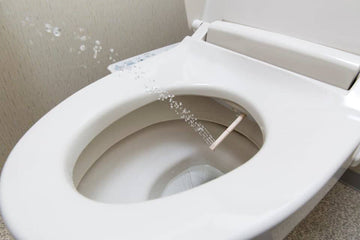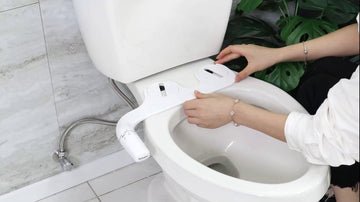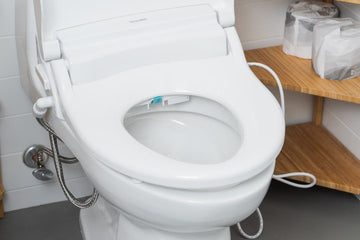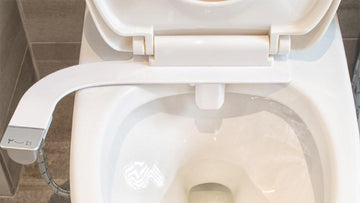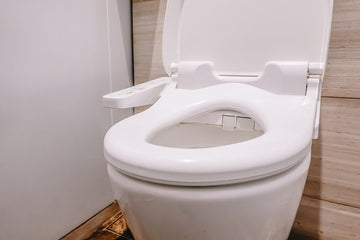In today's world, where sustainability and personal hygiene are becoming increasingly paramount, the bidet has resurfaced as a popular bathroom fixture. If you've ever considered upgrading your bathroom with a bidet, you might be wondering, 'Can you install a bidet without a plumber?' The good news is that with the right tools and a bit of patience, you can absolutely tackle this project on your own. Let's explore how you can achieve this without professional help.

Understanding the Basics of Bidet Installation
Before diving into the installation process, its essential to understand what a bidet is and how it functions. A bidet is a plumbing fixture used to clean the genital and anal areas after using the toilet. It offers a more hygienic and environmentally friendly option compared to traditional toilet paper.
Types of Bidets Available
There are several types of bidets to choose from, each with unique features and installation requirements. These include:
- Stand-alone Bidets: These resemble a low sink or a toilet and are installed separately from the toilet.
- Bidet Toilet Seats: These replace your existing toilet seat and are the most straightforward to install.
- Handheld Bidet Sprayers: Also known as bidet showers, these are similar to a showerhead and are mounted next to the toilet.
For those new to DIY plumbing projects, starting with a bidet toilet seat or a handheld sprayer may be the easiest option.
Tools and Materials Needed
To install a bidet without a plumber, you will need the following tools and materials:
- Adjustable wrench
- Screwdriver
- Plumber's tape
- Towel or bucket (to catch any water spills)
- The bidet kit of your choice
Having these items on hand will make the installation process smoother and more efficient.
Step-by-Step Bidet Installation Guide
Installing a Bidet Toilet Seat
1. Turn off the water supply: Locate the shut-off valve behind your toilet and turn it clockwise to stop the flow of water.
2. Remove the existing toilet seat: Use a screwdriver to unscrew the bolts holding the seat in place, then lift the seat off.
3. Attach the bidet seat: Align the bidet seat with the bolt holes on the toilet bowl and secure it using the provided bolts and washers.
4. Connect the water supply: Use the T-valve included in your bidet kit to connect the water supply hose to the bidet seat. Ensure all connections are tight and secure.
5. Turn on the water supply: Slowly turn the shut-off valve counterclockwise to restore water flow and test the bidet for leaks.
Installing a Handheld Bidet Sprayer
1. Turn off the water supply: As with the bidet seat, start by shutting off the water supply.
2. Install the T-valve: Disconnect the water supply hose from the toilet tank and attach the T-valve to the tank's fill valve.
3. Connect the bidet hose: Attach one end of the bidet hose to the T-valve and the other end to the handheld sprayer.
4. Mount the sprayer: Use the provided bracket to mount the sprayer on the wall or toilet tank within easy reach.
5. Test the sprayer: Turn the water supply back on and test the sprayer for leaks and proper function.
Benefits of Installing a Bidet Yourself
Choosing to install a bidet without a plumber not only saves money but also allows you to customize your bathroom experience. Additionally, it provides a sense of accomplishment and boosts your confidence in tackling other DIY projects. For more insights on eco-friendly bathroom upgrades, check out this guide.
Common Challenges and How to Overcome Them
Like any home improvement project, installing a bidet can come with its own set of challenges. Here are some common issues and tips on how to solve them:
- Leaking Connections: Ensure all connections are tightened properly, and use plumber's tape to prevent leaks.
- Incorrect Fit: Double-check the compatibility of your bidet kit with your toilet model before purchasing.
- Water Pressure Issues: Adjust the shut-off valve to regulate water pressure, ensuring a comfortable and efficient experience. For more on this, visit our water pressure guide.
Resources for Further Learning
If you're interested in learning more about using and maintaining bidets, consider visiting external resources such as Healthline for a comprehensive guide. Similarly, Sanitary Supply offers in-depth information on how bidet toilet seats function.

FAQs
What are the cost savings of installing a bidet myself?
By installing a bidet yourself, you can save on labor costs typically associated with hiring a plumber, which can range from $100 to $500 depending on the complexity of the installation.
Can all toilets accommodate a bidet?
While most modern toilets can accommodate bidet attachments, its crucial to ensure compatibility by checking the shape and size of your toilet before purchasing a bidet kit.
How long does it take to install a bidet?
Installation time can vary based on the type of bidet and your experience level. On average, a bidet toilet seat or handheld sprayer can be installed in about 30 to 60 minutes.
In conclusion, installing a bidet without a plumber is entirely feasible with the right tools and guidance. By following this comprehensive guide, you can enjoy the benefits of a bidet while honing your DIY skills and enhancing your home's functionality.
This article contains affiliate links. We may earn a commission at no extra cost to you.

